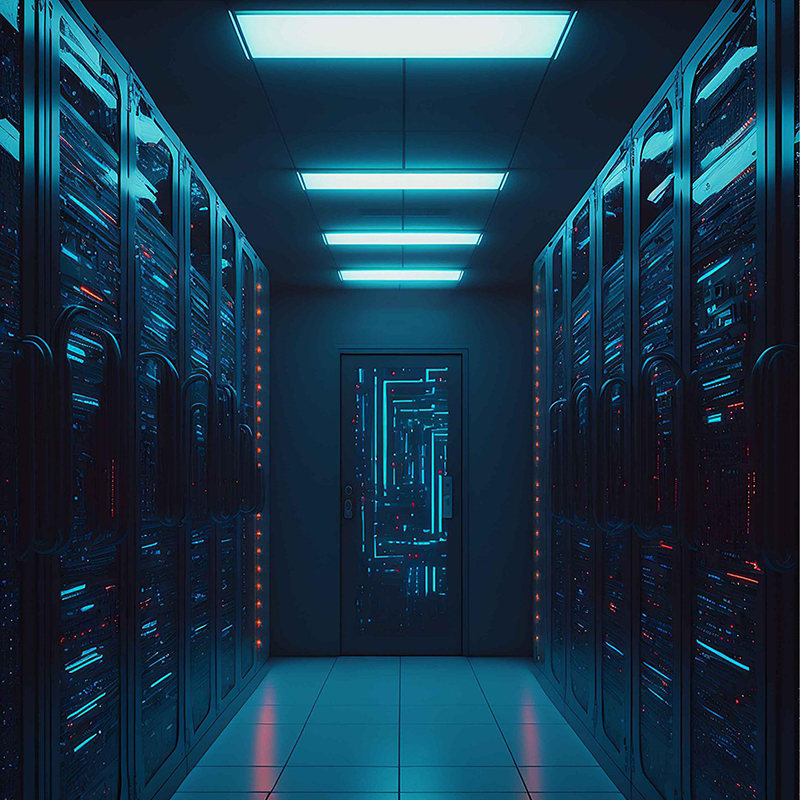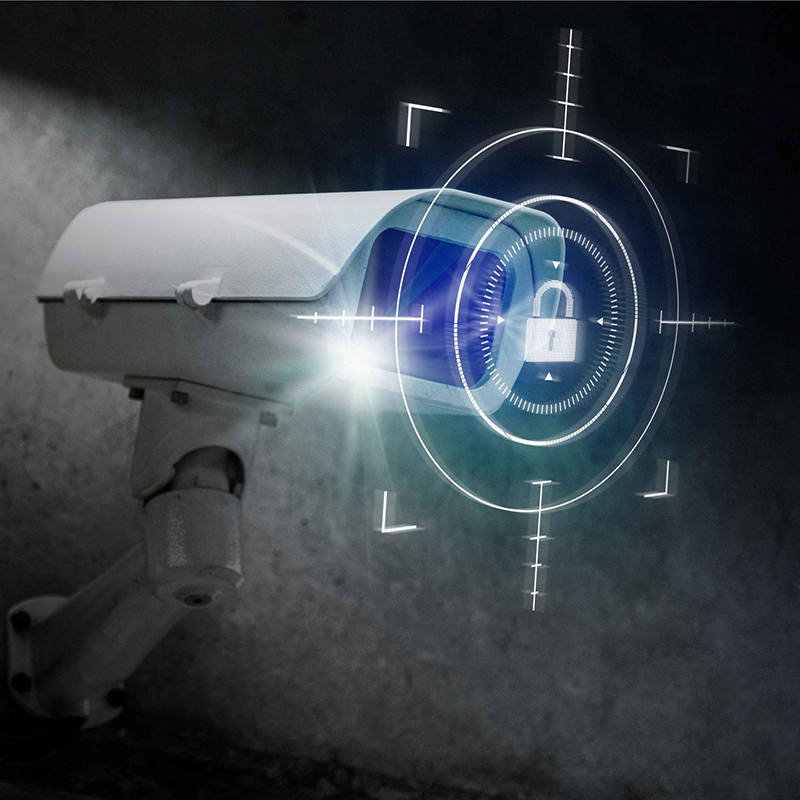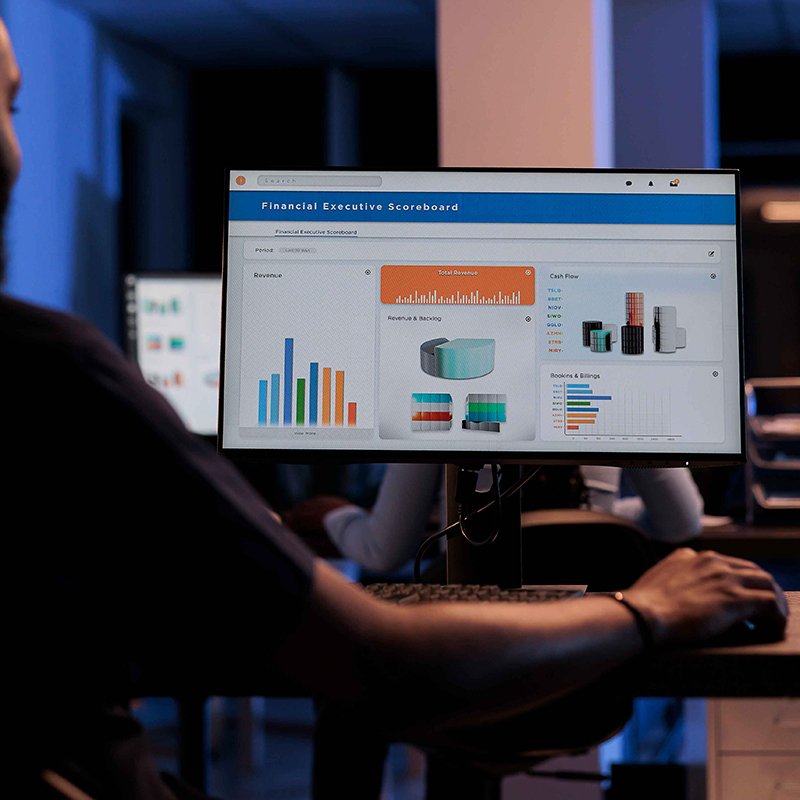
A server's primary function in an IT infrastructure is to host programs, manage data, and enable communication in order to meet the needs of different kinds of organizations. They exist in several forms, such as cloud instances, virtual machines, and physical servers, and each has special advantages in terms of resource usage, scalability, and adaptability. Servers are essential for maintaining efficient operations, facilitating vital corporate processes, and fostering cross-organizational communication.

Solutions for storage are necessary for handling the ever-increasing amounts of data that modern enterprises produce. These solutions cover a broad spectrum of technologies, such as cloud-based storage services, network-attached storage (NAS), and conventional storage arrays. They guarantee data accessibility, integrity, and regulatory compliance by offering dependable data storage, backup, and retrieval capabilities. Establishing scalable and resilient storage infrastructure enables enterprises to effectively manage their data assets and stimulate innovation in the business sector.

In order to provide smooth communication and collaboration within an organization's IT environment, networks are crucial for linking users, devices, and applications. However, network security is becoming a primary concern for companies due to the increase in cyberthreats. Strong network security measures are necessary to protect against data breaches, illegal access, and other security threats. Examples of these methods include firewalls, intrusion detection systems (IDS), and secure access controls. Organizations can safeguard confidential data, maintain network integrity, and comply with regulations by putting in place thorough network security procedures.

The term closed-circuit television, or CCTV for short, is a network of cameras used to watch and record activity in a particular area. These systems are commonly used for security and surveillance in a variety of locations, including residences, workplaces, public areas, and government buildings

Centralised control of end-user devices, such as desktops, laptops, and mobile devices, is made possible by desktop management systems (DMS). By streamlining patch management, software distribution, and remote troubleshooting, these technologies guarantee uniform security and performance across all endpoint devices inside the company.

In order to maximise uptime and performance, server management comprises proactive monitoring, maintenance, and infrastructure optimisation. This covers server OS administration, in which knowledgeable experts manage server operating system upgrades, security, and configuration to reduce vulnerabilities and guarantee adherence to industry norms.

Solutions for antivirus management and control are essential for protecting IT environments from viruses, malware, and other online dangers. Robust antivirus tactics, such as real-time threat detection, malware removal, and security upgrades, are used by managed service providers to safeguard vital data and systems from cyberattacks and unwanted access.

Network management services involve keeping an eye on, maintaining, and improving network infrastructure to guarantee smooth performance, security, and connection. In order to protect against cyber threats and unauthorised access, knowledgeable technicians proactively detect and fix network issues, maximise bandwidth utilisation, and implement security policies.

Any company's data management plan has to include backup and restore procedures in order to guarantee the integrity and availability of vital business data. These procedures entail making copies of the data and safely keeping them on the cloud or other secondary storage spaces. Backup solutions allow organisations to minimise downtime and swiftly restore data in the case of system faults or data loss. Organisations can improve their disaster recovery capabilities, reduce the risk of data loss, and preserve business continuity by putting in place dependable backup and restore procedures.

Building scalable, dependable, and secure network infrastructures that satisfy the changing needs of enterprises requires a thorough understanding of network design and integration. Network designs must be planned, put into place, and optimised in order to support business-critical applications, guarantee high availability, and facilitate communication. Organisations may optimise network performance, optimise resource allocation, and effectively adjust to evolving business needs by utilising best practices in network design and integration.

To fully utilise a variety of IT services and solutions, one must be proficient in both Linux and Microsoft environments. Strong platforms for cloud computing, enterprise apps, and collaboration tools are offered by Microsoft technologies like Windows Server, Active Directory, and Microsoft Azure. Linux-based systems, on the other hand, are great for a variety of tasks, including web hosting, database management, and software development, since they are scalable, reliable, and flexible. Organisations may enhance their IT infrastructure, boost operational effectiveness, and spur creativity in the digital age by having competence with Microsoft and Linux environments.

If you are looking to rent a laptop or a desktop computer for yourself or your business then To meet every need, our rental service provides a large selection of top-notch, fully functional laptops and desktop computers. Take advantage of the affordability and convenience of either long-term or short-term rentals at reasonable prices. Acquire the necessary technology at your convenience, free from the burden of ownership.